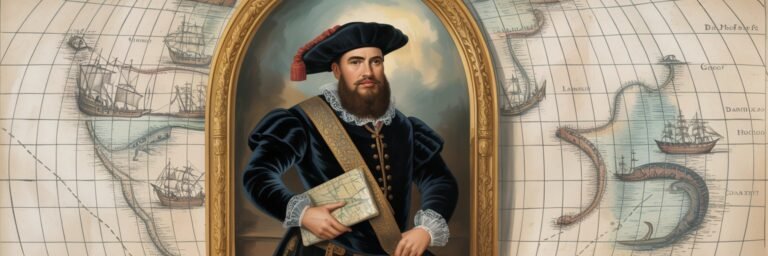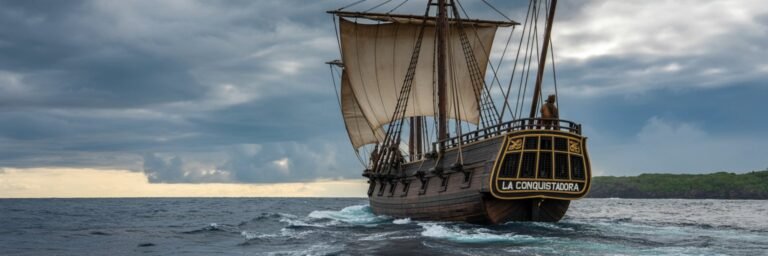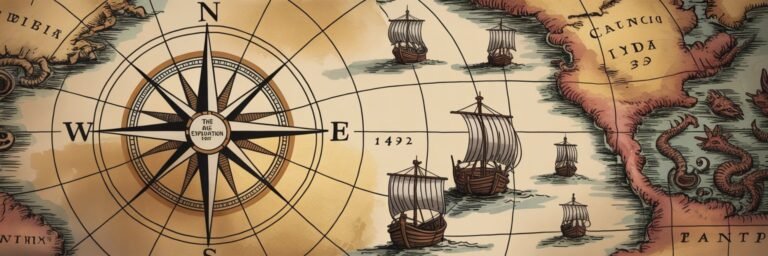INTRODUCTION
Charting an illuminating course through the Age of Exploration requires one to identify and analyze the turning points of this seminal epoch in world history. From the 15th to the 17th centuries, the Age of Exploration, or Age of Discovery as it’s also known, altered the world’s geographical, cultural, and intellectual map. This period witnessed the rise of Europe as a global power, the discovery of new civilizations, and the diffusion of cultures, goods, and ideas that comprise the world we live in today. Let us embark on this journey, delving into the top 10 turning points that marked this luminary age.
HISTORICAL BACKGROUND
Renaissance Europe, primed by advances in science, technology, and a quest for wealth and glory, launched into an era of exploration. Motivated by the alluring prospects of direct maritime trade to Asia and the spread of Christianity, explorers defied unknown perils, providing a fresh, global perspective. This radical shift in European awareness marked the inception of a larger, interconnected world.
1. The Capture of Ceuta, the jewel of North Africa, by King John I of Portugal in 1415, signaled the start of European overseas exploration.
2. The 1488 successful navigation of the Cape of Good Hope by Bartolomeu Dias baptized European expansion beyond the African continent to the lucrative markets of Asia.
3. Christopher Columbus’ 1492 voyage to the Americas, sponsored by Spain, refashioned the world map and initiated the Columbian Exchange.
4. Vasco da Gama’s 1498 voyage opened a direct sea route to India from Europe, marking the beginning of European imperialism.
THEORIES AND INTERPRETATIONS
The Age of Exploration also sparked an era of new theories and interpretations.
5. The Treaty of Tordesillas (1494) established the Pope’s Line of Demarcation, significantly influencing global politics. This treaty, essentially an unenforceable gentlemen’s agreement, maneuvered Spain and Portugal into prominent global powers.
6. The shift towards Helio-centrism, prominently advocated by Nicolaus Copernicus in 1543, revolutionized the fields of astronomy and navigation, encouraging explorers to tackle daunting exploits with renewed scientific confidence.
MYSTERIES AND CONTROVERSIES
This period was not without its mysteries and controversies.
7. The legend of El Dorado, a city rumoured to be brimming with gold, stirred a frenzied hunt among European explorers, resulting in the desolation of indigenous civilizations.
8. The controversy surrounding Christopher Columbus’ legacy is a key aspect of this era. He is often lauded for discovering the Americas, but he also ushered in a horrific chapter of indigenous populations’ enslavement and genocide.
SYMBOLISM AND CULTURAL SIGNIFICANCE
In addition to reshaping the physical world, the Age of Exploration also bore profound symbolism and cultural significance.
9. The triumphant return of Magellan’s surviving ship Victoria in 1522 bolstered Europe’s self-image and fostered an enduring fascination with navigation and discovery.
10. The advent of cartography, marked by the publication of Martin Waldseemüller’s map in 1507, which was the first to term the New World as ‘America,’ symbolized the dawn of an interconnected world.
MODERN INVESTIGATIONS
Recent investigations into this era continue to yield intriguing insights. Groundbreaking studies in archaeogenetics are decrypting the genetic legacy of the Columbian Exchange, and innovative maritime archaeology has shed light on ship design evolution, illuminating our understanding of the exploratory advances.
LEGACY AND CONCLUSION
The Age of Exploration redefined the contours of the known world, accelerating globalization and ushering in a new geopolitical order, the ripple effects of which we feel even today. It propagated the transfer of plants, animals, and diseases, kingdom expansion, cultural exchanges, and the establishment of transoceanic trade routes. Yet, it also bears the infamous legacy of colonization, slave trade, and the systematic destruction of native cultures and populations. As we trace the routes of ancient explorers, we are compelled to reflect on this complex, impactful era that set the stage for the modern world.
Piecing together this dynamic age’s narrative underscores the vision, courage, and brutal dispossession that drove it. Ultimately, charting the Age of Exploration’s turning points elucidates our understanding of our intricate global network, blending the realms of history, culture, and human ambitions.





